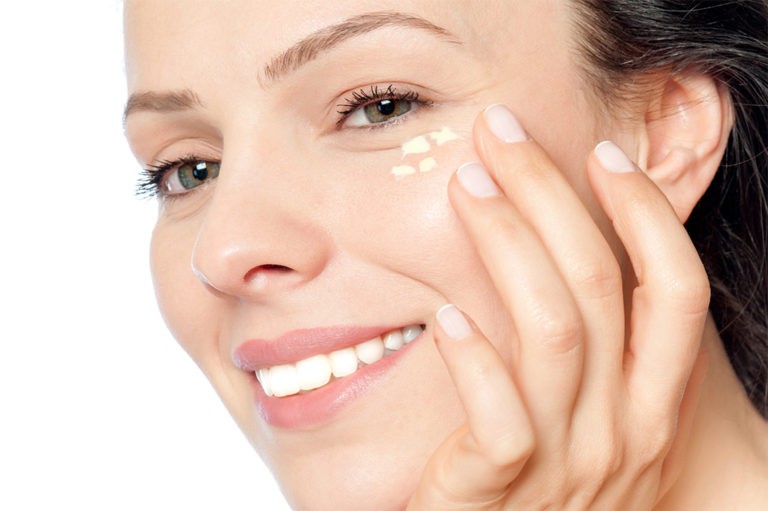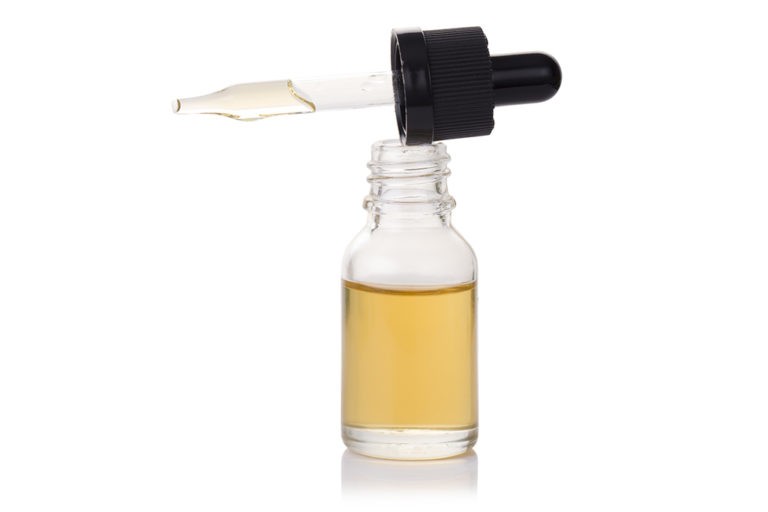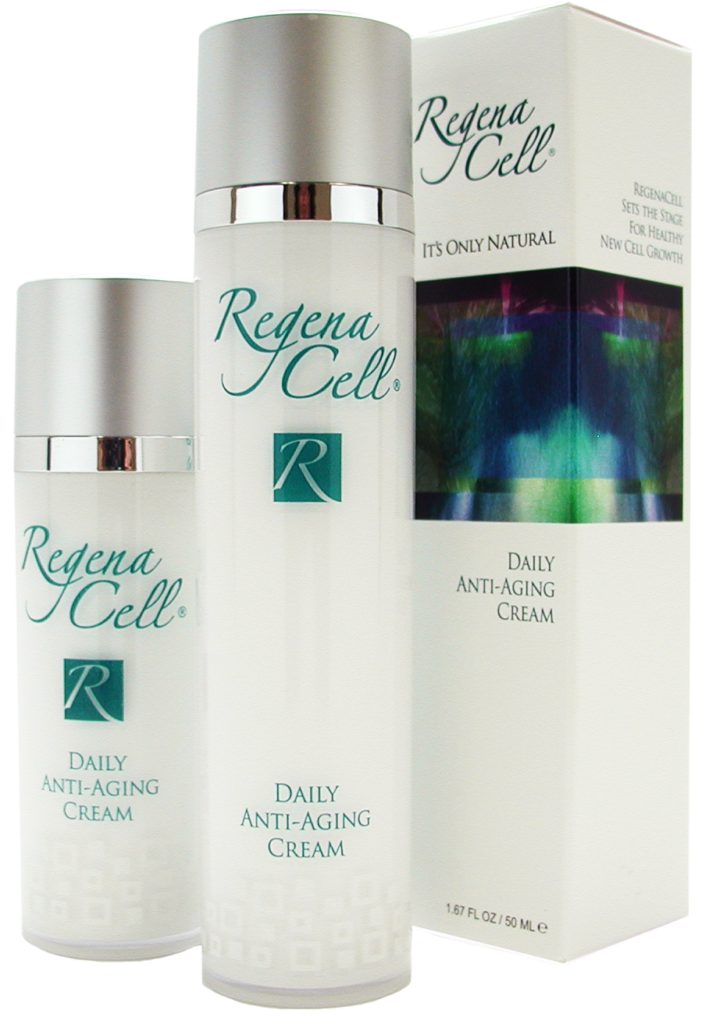Not Yet Convinced?
Request A Free Sample
Healthy skin is younger looking skin, and RegenaCell® Daily Anti-Aging Cream will give you that healthy skin. You have to use it to believe it!

Limit One Per Customer
The frightening truth is that most skin care products contain caustic chemicals, harsh synthetics and unhealthy oils. All of these chemicals and oils are painstakingly designed to create the illusion of healthy skin, but it is just that – an illusion.
There are many hidden secrets in the cosmetic industry that, if you knew them, would cause you to immediately go to your drawers and shelves of existing cosmetics and dump them into the trash.

There are chemicals and oils painstakingly designed to create the illusion of healthy skin, but it is just that - an illusion.
There are no synthetic chemicals or oils in RegenaCell® Daily Anti-Aging Cream.
Many unhealthy oils stay on the surface of the skin and clog pores. They prevent the skin from breathing and absorbing healthy nutrients. It’s like trying to breathe with a plastic bag on your head. How can your aging skin absorb the healthy nutrients it needs if it is covered in oil? Oils may make your skin feel moisturized and smooth, but you are being fooled by the thin film lying on the surface.
Oil is not really a natural moisturizer, nor is it a good one. It works by blocking exposure to outside air. Plus, it is very susceptible to oxidation. You can see the destruction done by oxidation when you see rust on metals; the oxidative process corrodes and it deteriorates. You obviously want to prevent your skin from oxidizing and similarly deteriorating. Oxidation is what causes aging. Excessive oxidation means premature aging.


Even though you may be concerned about your aging appearance and, therefore, take a lot of vitamins, it doesn’t mean your skin isn’t prematurely aging, nor does it mean that your present skin-care products aren’t doing more harm than good regarding keeping your skin looking young and beautiful.
RegenaCell contains none of the synthetics, chemicals or oils that can harm your skin. Turn back the aging process with All Natural RegenaCell® Daily Anti-Aging Cream.
30ml (Small) Pump Bottle $39.95
50ml (Large) Pump Bottle $59.95

Commonly listed as: Isocetyl alcohol; cetyl alcohol; stearyl alcohol; ethyl alcohol; butyl alcohol; benzyl alcohol. Alcohol SD-40 stands for de-natured alcohol. Used as an antiseptic as well as a solvent giving it strong grease-dissolving abilities. Alcohol is drying to the skin when used in high concentrations. Some alcohols are used to facilitate the penetration of another ingredient into the skin or to create a larger molecule.
Used as inhibitors of microbial growth and to extend shelf life of products. Have caused many allergic reactions and skin rashes. Studies have shown that they are weakly estrogenic and can be absorbed by the body through the skin. Widely used even though they are known to be toxic.
Derived from animal skins and ground-up chicken feet. Both of these ingredients form films that may suffocate and over-moisturize the skin. It suffocates the skin trapping toxins and keeping out oxygen. Many of the hyped ingredients found in most cosmetic brands cannot penetrate the skin because of their high-molecular weight, so they are of little benefit.
These are widely used preservatives. The American Academy of Dermatology has found them to be a primary cause of contact dermatitis. Two trade names for these chemicals are Germall II and Germall 115.
Thickening agent used to give body to a formulation. This is not a true wax (like beeswax) it is a chemical mixture of emulsifiers and fatty alcohols that permits the formulation of stable creams.
Quite drying and may be dehydrating to the skin. It also may be contaminated with impurities. Used in formulations and masks. Forms films which are gas impermeable. Effectively traps toxins and CO in the skin which need to vent and escape. Then suffocates the skin by shutting out the vitally needed oxygen.
Advertisers have found that the words "contains Lanolin" help to sell a product and have promoted it as being able to "penetrate the skin better than other oils," although there is little scientific proof of this. Lanolin has been found to be a common skin sensitizer causing allergic contact skin rashes. Lanolin usually contains pesticides and dioxins, known carcinogens.
Comes from crude oil (petroleum) used in industry as metal cutting fluid. May suffocate the skin by forming an oil film. Healthy skin needs to take in oxygen and release carbon dioxide. It causes petrochemical hypersensitivity. The allergic reactions can become quite serious. The fact that mineral oil does not penetrate the skin well makes it inappropriate for use in an absorption base in a skin cream of any kind. Serious carcinogens are commonly found in mineral oil.
Commonly listed as: PEG 2 stearate; PEG 5 stearate; PEG 6 stearate; butyl stearate. PEG-100 Stearate is technically a polyethylene glycol ester of stearic acid containing 100 moles of PEG. Butyl stearate used in small quantities by the cosmetic industry. Has been shown to cause allergic reactions.
An emulsifier and thickening agent found in many vegetable fats. A main ingredient in lubricants. May cause allergic reactions in people with sensitive skin and is considered somewhat comedogenic (causing blackheads and plugging an excretory duct of the skin).
Used as a substitute for beeswax. This is a solid mixture of hydrocarbons obtained from petroleum, although it can also be obtained from wood or coal. Pure paraffin is harmless to the skin. But the presence of impurities may result in irritation, eczemas, and other skin problems.
Also known as petroleum jelly, this mineral oil derivative is used for its emollient properties in cosmetics. It has no nutrient value for the skin and can interfere with the body's own natural moisturizing mechanism, leading to dryness and chapping. It often creates the very conditions it claims to alleviate. Manufacturers use petrolatum because it is unbelievably cheap.
Polysorbate 80 is an oil-in-water emulsifier. Polysorbate 60 is an emulsifier, wetting agent, and detergent emulsifier for mineral oil, fats, and waxes.
Ideally this is a vegetable glycerin mixed with grain alcohol, both of which are natural. Usually it is a synthetic petrochemical mix used as a humectant. It has been known to cause allergic reactions, hives and eczema. When you see PEG (polyethylene glycol) or PPG (polypropylene glycol) on labels, beware—these are related synthetics.
A petroleum-derived chemical used in hairsprays, styling aids and other cosmetics. It can be considered toxic, since inhaled particles can damage the lungs of sensitive persons.
A quaternary ammonium compound used in hair conditioners and creams. Developed by the fabric industry as a fabric softener, it is a lot cheaper and easier to use in hair conditioning formulas than proteins or herbals, which are beneficial to the hair. Causes allergic reactions. Toxic.
Used to make cosmetics "pretty," synthetic colors, along with synthetic hair dyes, should be avoided at all costs. They will be labeled as FD&C or D&C, followed by a color and a number. Example: FD&C Red No. 6 / D&C Green No. 6. Many synthetic colors can be carcinogenic. If a cosmetic contains them, don't use it.
The synthetic fragrances used in cosmetics can have as many as 200 ingredients. There is no way to know what the chemicals are, since on the label it will simply read "fragrance." Some problems caused by these chemicals include headaches, dizziness, rash, hyperpigmentation, violent coughing, vomiting, skin irritation—the list goes on.
Healthy skin is younger looking skin, and RegenaCell® Daily Anti-Aging Cream will give you that healthy skin. You have to use it to believe it!

Limit One Per Customer

RegenaCell® Daily Anti-Aging Cream is powerful, natural anti-aging, anti-wrinkle, facial skin care product with a high concentration of vital nutrients, anti-oxidants, cell rejuvenators and natural moisturizers
ADDRESS
Visalia, CA, USA 93277 USA
PHONE
559-799-2761

RegenaCell® Daily Anti-Aging Cream is powerful, natural anti-aging, anti-wrinkle, facial skin care product with a high concentration of vital nutrients, anti-oxidants, cell rejuvenators and natural moisturizers
ADDRESS
Granite Bay, CA 95746 USA
PHONE
1-916-771-2500 Direct
1-888-501-3344